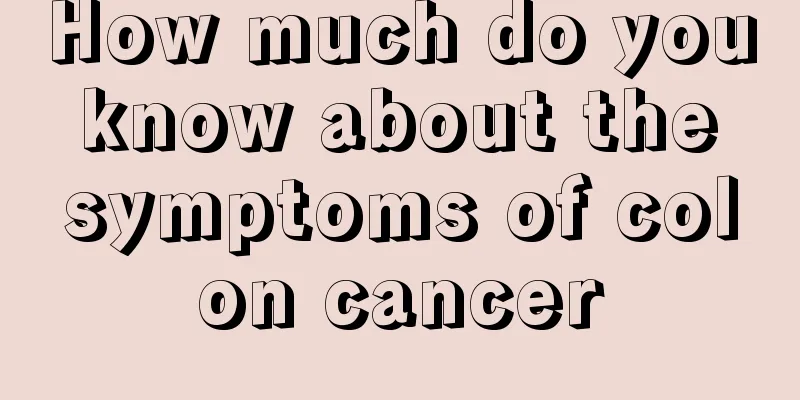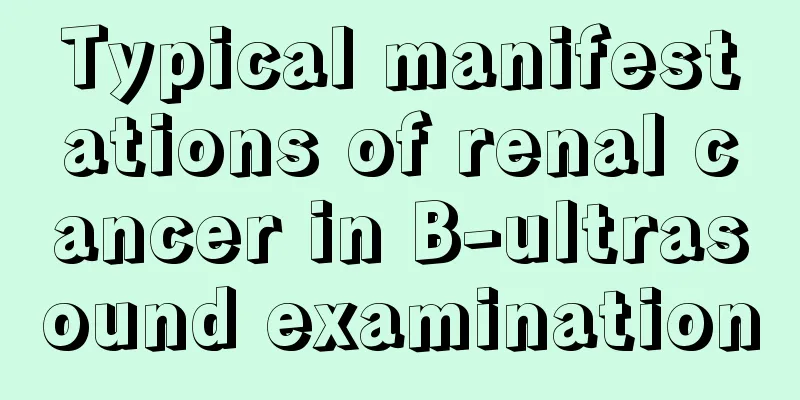What to do if you have toothache? These methods will teach you

|
As the saying goes, toothache is not a disease, but it can be fatal. It can be seen that toothache has a great impact on us. Gingivitis and periodontitis can cause toothache. If the toothache is severe, you should see a dentist in time and pay more attention to oral hygiene. 1. A small method to teach you how to temporarily stop toothache 1. Use a piece of Sichuan pepper and hold it on the decayed tooth to relieve the pain. 2. Bite a lilac flower into pieces with your teeth and fill the gaps in the decayed teeth. The toothache will disappear in a few hours and will last for a long time (lilac flowers can be purchased at Chinese medicine stores). 3. Rubbing with water or massaging with your fingers can relieve pain. 4. Rinsing your mouth several times with salt water or wine can also relieve or stop toothache. 5. If your teeth hurt when exposed to heat, it is mostly caused by pus accumulation. You can use an ice pack to cool your cheeks to relieve the pain. Note: The above method is for reference only. For stubborn toothache, if the above methods are ineffective, you can take painkillers sublingually to relieve the pain. The most important thing is that even if the toothache is stopped, it does not mean that the treatment is successful. The lesion is still getting worse. If you want to cure the toothache, you must target the cause. It is recommended to go to a regular hospital for dental treatment after the pain is relieved, find out the real cause of the toothache, and receive regular oral treatment to eradicate the toothache. The following introduces 2. Dental treatment methods for some toothaches: 1. Acute pulpitis and acute periapical inflammation The dentist will perform pulp drainage and insert camphor phenol and clove oil cotton balls into the local caries cavity to relieve the pain. 2. Acute periodontitis and periodontal abscess Before an abscess is formed, you can clean the dental plaque, take periodontal medication, antibiotics, apply iodine glycerin externally, etc.; if an abscess has formed, it should be incised and drained, and antibiotics should be used to control the infection. 3. Residual roots, residual crowns and diseased teeth that can no longer be retained should be extracted as soon as possible, and dentures should be replaced after two months. The editor reminds you: "Prevention before illness"! When it comes to toothache, prevention is the most important thing. Pain relief does not mean treatment. You should pay attention to oral and dental hygiene at ordinary times to prevent toothache. It is important to brush your teeth every morning and evening, and rinsing your mouth after meals is also a good idea. 3. Diseases that can cause toothache 1. Acute pulpitis. It is more common in patients with deeper caries. The bacteria enter the pulp cavity from the caries hole, causing congestion and inflammation of the dental nerve. Toothache is often spontaneous, the pain worsens at night, and is more severe after hot or cold stimulation. The pain may also radiate to the face, temples, and ears. When suffering from suppurative pulpitis, the patient's pain is aggravated by heat stimulation, while the pain is reduced or disappears by cold stimulation. 2. Acute periapical inflammation. Caused by factors such as the development of acute pulpitis or trauma. The diseased tooth presents persistent pain, a floating sensation, and a fear of chewing. The patient can point out the diseased tooth correctly, but tapping the tooth will cause pain. At this time, there is no stimulating pain because the nerve of the diseased tooth has been necrotic. 3. Acute periodontitis. The nature of the toothache is similar to that of acute periapical periodontitis. The diseased teeth not only cause chewing pain and a floating sensation, but also have formed periodontal pockets and loose teeth. The gum tissue may become swollen, painful, and bleed repeatedly. 4. Periodontal abscess. Further development of periodontal tissue inflammation can cause suppurative inflammation. When an abscess is formed, the pain is severe, and a feeling of fluctuation will appear locally after the abscess is formed. After a periodontal abscess forms, the pain can be significantly reduced or relieved. 5. Tooth hypersensitivity. It is often caused by gingival recession, exposed dentin at the neck of the tooth and tooth defects. At this time, cold, hot, sweet, sour and other stimuli may cause pain, but the pain will disappear after the stimulation stops. 6. Food impaction pain. Food can get stuck in the spaces between teeth and cause toothache, which is called food impaction pain. 7. Dry socket. It usually occurs 2 to 4 days after tooth extraction and can cause spontaneous, persistent, severe pain. During the examination, it was found that the blood clots in the tooth extraction wound had a foul smell. |
<<: What is the best way to treat Tourette Syndrome
>>: What is non-GMO, traditionally grown
Recommend
Is it normal to have small blood spots on lean meat?
When shopping for lean meat, if you find some sma...
What to do if the root of porcelain teeth becomes inflamed
Nowadays, as people pay more and more attention t...
How to correctly diagnose testicular cancer
Testicular cancer is a disease that occurs in the...
What are some tips on how to stop coughing quickly?
There are many reasons for coughing. Coughing is ...
Side effects of ultraviolet light therapy device
Many people don’t know much about ultraviolet lig...
Clinical manifestations of recurrence of nasopharyngeal carcinoma
Nasopharyngeal cancer is very common around us. M...
Several aspects of how to prevent brain cancer
What are the major aspects of how to prevent brai...
What are the side effects of chemotherapy and radiotherapy for nasopharyngeal carcinoma?
What are the side effects of chemotherapy and rad...
How to enhance skin immunity
When it comes to enhancing skin immunity, I belie...
Is physical therapy useful for gout
Diseases are very common in people's daily li...
The efficacy of tourmaline
Tourmaline is not unfamiliar to people who love t...
Are sesame oil and pepper oil the same?
In our lives, many people prefer to eat sesame oi...
What types of liver cancer can be divided into? What are the common treatments for liver cancer?
When it comes to liver cancer, I believe many peo...
What can a chest X-ray reveal?
Nowadays, chest X-ray examination is a common exa...
Analysis of what is fibroid
I believe that many patients who are being examin...









